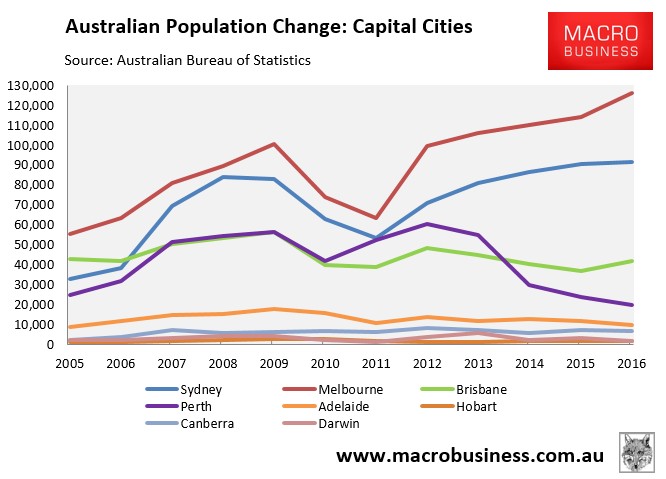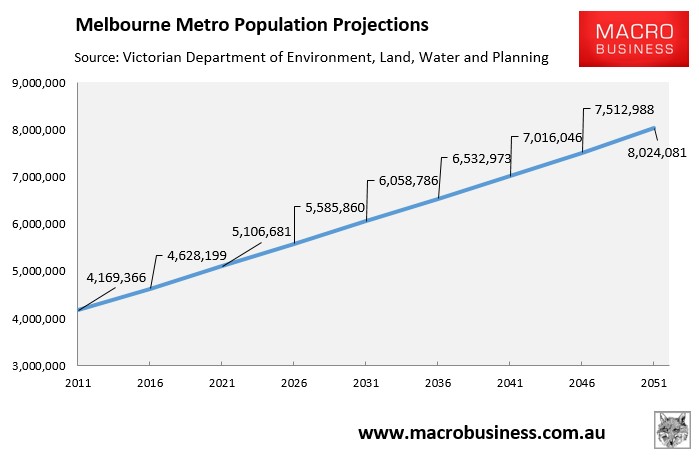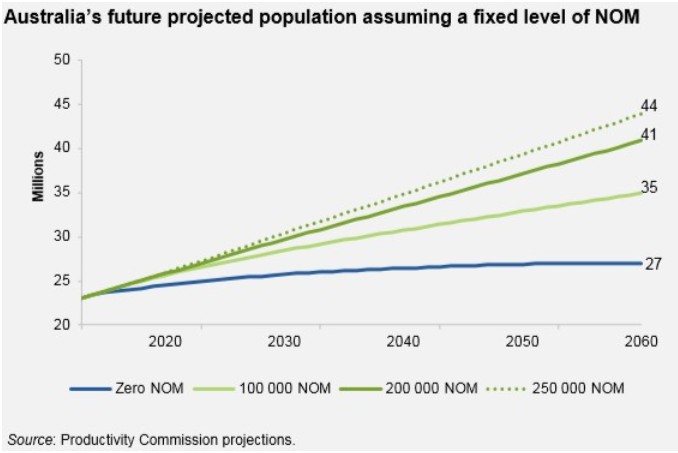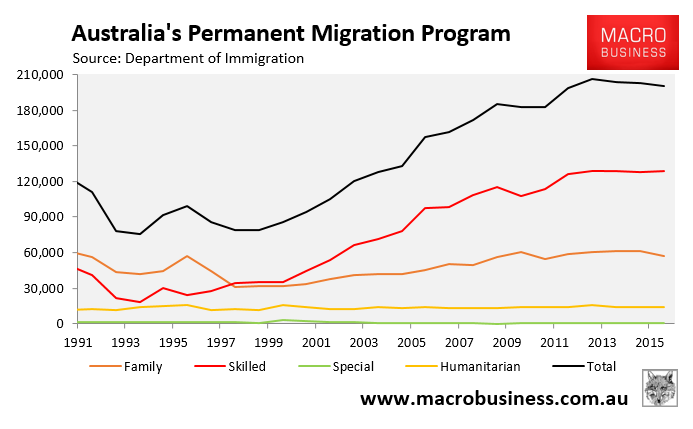After Melbourne’s population surged by an insane 556,000 in the five years to 2016, and by 1.1 million people over the past 12 years:

We learnt in October that the Victorian Government has been forced to remove seating from trains to accommodate surging passenger growth. Now, a Monash University study has confirmed that Melbourne’s public transport services have failed miserably to keep up with the population influx:
A Monash University study has found that total provision of train, tram and bus services in Melbourne has increased by 50 per cent since 2001-02.
However, when taking into account the city’s massive growth in recent times, the amount of services per person has been declining for about five years.
Public transport timetabled km per capita rose to about 37 in 2011-12, but it dropped to less than 34 last year.
Head of Monash’s public transport research group Professor Graham Currie said the data confirmed that the level of new services was not keeping up with population growth.
“At the moment we’re not improving service, we’re actually going backwards,” he said.
“When people say full trains and worry there are no buses, there’s every reason for that because we haven’t been keeping up with the growth.”
Not surprisingly, this failure to keep up with population growth has driven a doubling of complaints from the public:
FRUSTRATED passengers are becoming fed up waiting for public transport, with complaints about unreliable services more than doubling in the space of a year.
The Public Transport Ombudsman warned dissatisfaction could continue as population growth and major projects put pressure on the city…
In the past financial year, reliability complaints surged by 111 per cent to a total of 137, while cancellation issues increased by 29 per cent to 90…
Traffic delays on Melbourne’s road network are also becoming widespread, costing the economy nearly a billion dollars in lost productivity:
TRAFFIC delays are costing Melbourne’s economy up to $912.13 million a year, according to new analysis by a GPS navigation firm.
The report released by TomTom Telematics has put a price on the peak-hour congestion experienced by the city’s commuters.
Analysis of trip data found that traffic snarls in Melbourne has increased travel times by 33 per cent, a 4 per cent rise since 2016.
The delays meant motorists were spending an additional 34 minutes on the road, costing the city’s 383,617 commercial drivers $10.36 per day.
TomTom Telematics spokesman Christopher Chisman-Duffy said the figures were bad news for business.
“Melbourne continues to rank as Australia’s second most congested city, according to the TomTom Traffic Index Report, and saw one of the biggest increases in congestion this year,” he said.
“Since 2008, congestion has increased by 8 per cent, making it the 58th most congested city globally.”
And the situation is set to worsen, according to Victoria’s infrastructure watchdog:
NEARLY one-fifth of Melbourne’s roads will slow down under heavy traffic by 2031, according to new research by Victoria’s infrastructure watchdog.
Infrastructure Victoria’s Managing Transport Demand report has forecast that 19.2 per cent of Greater Melbourne’s road network will be at high capacity in 14 years, up from the current level of 15.8 per cent.
According to the modelling, about 1070km of busy roads will be at 70 per cent capacity by the end of the next decade, the benchmark for when motorists will notice slower travel times and heavier congestion…
“We can see very clearly that roads will become busier in the future with an additional 3.5 million trips daily across the network,” he said…
Public transport patronage is expected to surge by 75 per cent but cars are still forecast to reign supreme in Melbourne, accounting for more than two-thirds of all trips in 2031.
Sardine packed trains, more time stuck in traffic, less affordable (and smaller) homes, schools and hospitals bursting at the seams, as well as increasingly costly infrastructure ‘solutions’. This flies in the face of “Ponzi” Tim Pallas’ glowing assessment of Melbourne’s economy.
The sad reality is that Melbourne is facing a sardine packed future with the city’s population projected to explode by 97,000 people a year to 8 million mid-century:

Of course, anyone with half a brain knows what is driving Melbourne’s crush-loading and falling livability: the federal government’s mass immigration ‘Big Australia’ policy.
According to the Productivity Commission’s recent Migrant Intake into Australia report, Australia’s population is projected to grow to around 41 million mid-century under current mass immigration settings. This is roughly 14 million more people than would arrive into Australia under zero net overseas migration:

Clearly, the best way to avert further crush-loading in Melbourne, as well as maintain decent living standards, is for the State Government to demand the federal government slash Australia’s mass immigration program, in turn relieving pressure on housing, infrastructure and services:

Sadly, all three major parties – the Coalition, Labor and the Fake Greens – are committed to maintaining Australia’s mass immigration ‘Big Australia’ policy, which means that Melbourne’s living standards are destined to be crush-loaded like sardines for the foreseeable future.
And for what?

